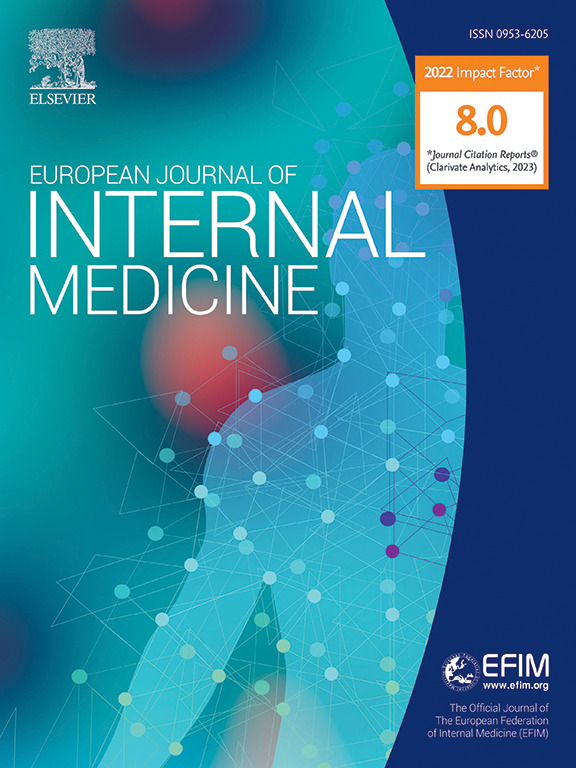High-flow nasal oxygen therapy in patients with hypercapnic respiratory failure: A systematic review and meta-analysis
IF 5.9
2区 医学
Q1 MEDICINE, GENERAL & INTERNAL
引用次数: 0
Abstract
Background
Noninvasive ventilation (NIV) is recommended as the first-line respiratory support method for patients with hypercapnic respiratory failure (HRF). However, the need for well-trained operators and the occurrence of treatment discomfort may limit its efficacy. High-flow nasal oxygen therapy (HFNO) is a convenient respiratory support with user-friendly operation, high comfort, and good compliance. This systematic review and meta-analysis was performed to compare the therapeutic effects of HFNO and other noninvasive respiratory support methods [NIV or conventional oxygen therapy (COT)] in patients with acute HRF (AHRF) or chronic HRF (CHRF).
Methods
We searched the PubMed, Web of Science, Embase, and Cochrane Library databases from inception to May 2024 to identify randomized clinical trials comparing the impact of HFNO and NIV/COT in adults with HRF.
Results
Sixteen studies (1630 patients) were included. Compared with NIV, HFNO did not improve the primary outcome of PaCO2 in patients with AHRF or CHRF [AHRF: MD = −0.81, 95 % CI = −3.40 to 1.77; CHRF: MD = 1.82, 95 % CI = 0.44 to 3.20]. However, HFNO showed advantages over COT (AHRF: MD = −2.03, 95 % CI = −3.48 to −0.59; CHRF: MD = −2.64, 95 % CI = −4.24 to −1.03).
Conclusions
The evidence of its clinical efficacy in hypercapnic patients remains inconclusive. Further studies are needed to generate more evidence for the application of HFNO in patients with HRF and to determine the subset of patients for whom may be preferable.
求助全文
约1分钟内获得全文
求助全文
来源期刊
CiteScore
9.60
自引率
6.20%
发文量
364
审稿时长
20 days
期刊介绍:
The European Journal of Internal Medicine serves as the official journal of the European Federation of Internal Medicine and is the primary scientific reference for European academic and non-academic internists. It is dedicated to advancing science and practice in internal medicine across Europe. The journal publishes original articles, editorials, reviews, internal medicine flashcards, and other relevant information in the field. Both translational medicine and clinical studies are emphasized. EJIM aspires to be a leading platform for excellent clinical studies, with a focus on enhancing the quality of healthcare in European hospitals.

 求助内容:
求助内容: 应助结果提醒方式:
应助结果提醒方式:


